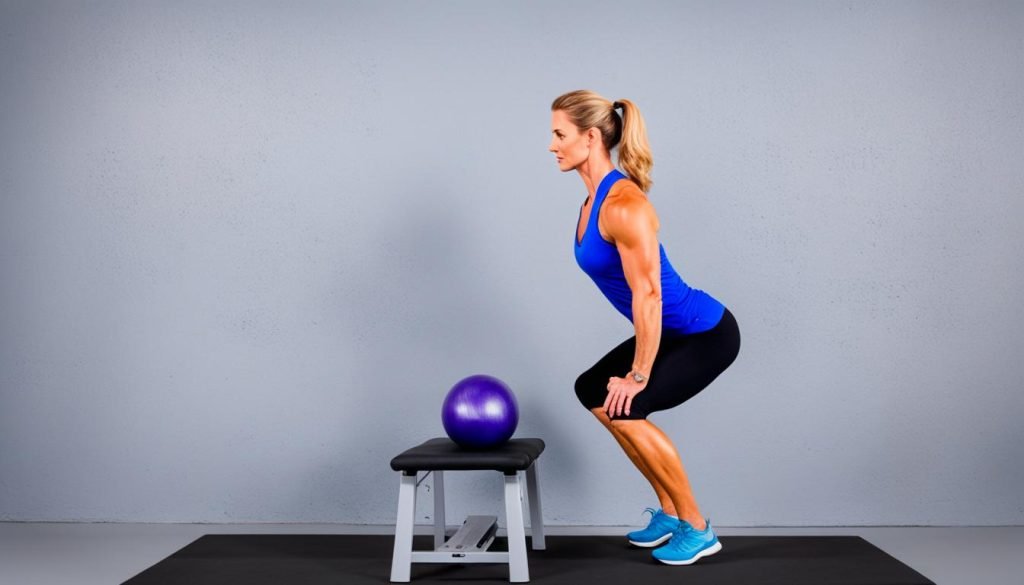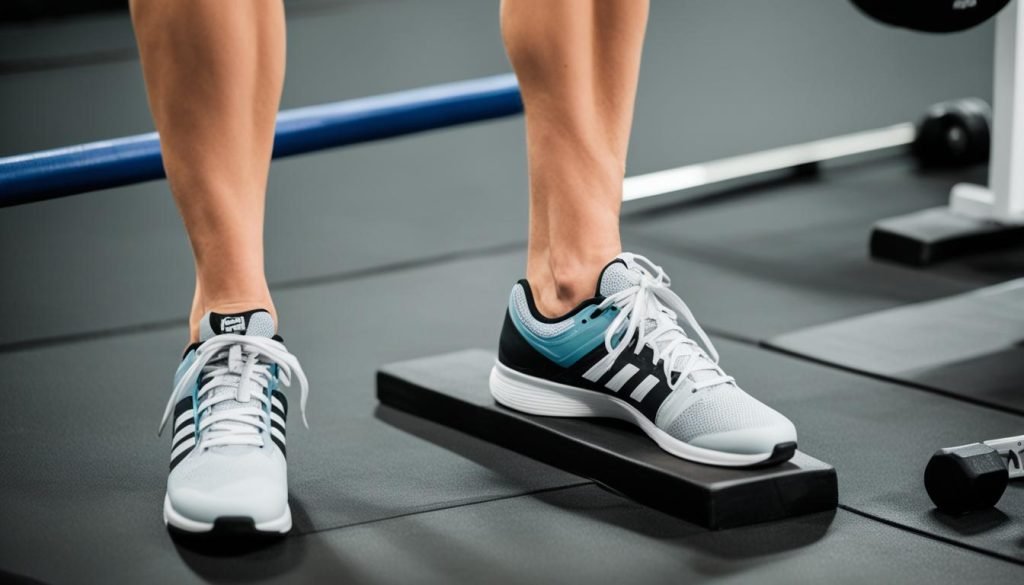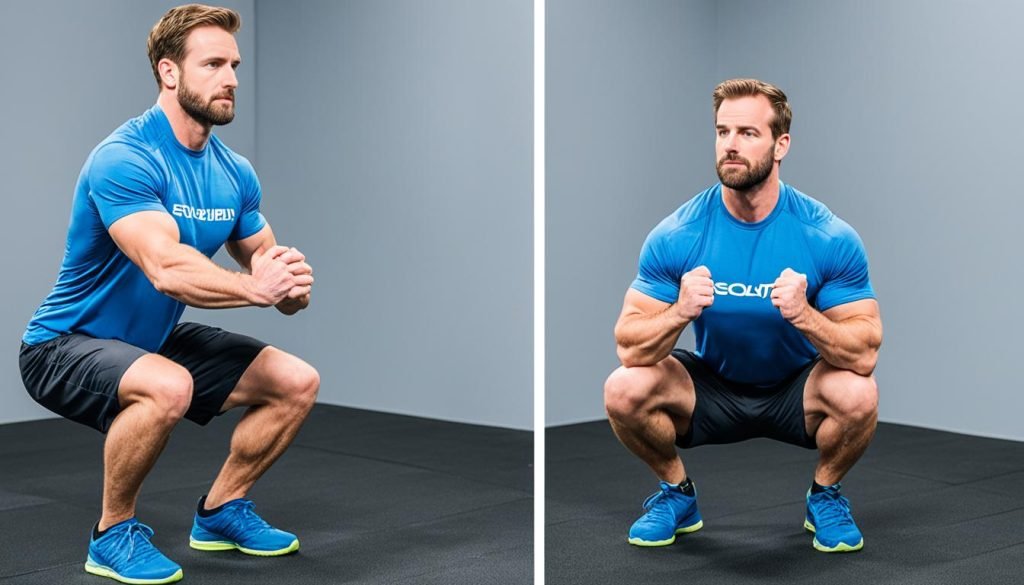Ever thought about if your squat depth is right for your body? It's key for athletes and anyone wanting to stay fit and avoid injuries. Getting the squat form right helps work key muscles and boosts your fitness. This guide will show you how to get the right depth safely. You'll learn about movement patterns and the importance of proper form to change your fitness for the better.
Key Takeaways
- Correct squat depth is critical for optimizing performance and preventing injuries.
- Proper squat form engages essential muscle groups in the lower body.
- Understanding squat technique enhances safety throughout the movement.
- Assessing your flexibility and mobility can influence squat depth.
- Common mistakes can compromise proper squat alignment and effectiveness.
The Importance of Mastering Squats
Squats are a key exercise that helps with physical fitness and overall health. They are important in strength training and improve functional fitness. This makes it easier to do everyday tasks.
Foundational Movement Pattern
Squats are a basic movement that helps with strength, coordination, and balance, especially for athletes. They prepare the body for different movements, making it more agile and stable. Learning to do squats well can greatly improve performance in sports and daily activities.
Benefits of Proper Squat Form
Doing squats the right way has many benefits. It works out muscles in the lower body like the quadriceps, hamstrings, and glutes. Squats also make joints stronger, protecting the knees and hips. They help make joint fluid, which keeps joints moving smoothly.
Good form in squats makes workouts more effective and lowers the chance of getting hurt.
Understanding Correct Squat Depth
Getting the right squat depth is key for doing well and staying safe. It's important to know the depth standards to make your squats better. The hips should go below the knees to hit these standards. This makes sure all the muscles work together, making the squat stronger and more stable.
Lifting weights without getting to the right depth can lead to injuries. This is because you're not moving enough.
Depth Standards in Squatting
Following depth standards is very important. These standards tell you the right angles and positions for a good squat. A good squat helps activate muscles and improves movement mechanics. Here are some common depth standards:
- Hips go below the knees for optimal muscle engagement
- Feet shoulder-width apart for balanced stability
- Maintain a neutral spine to prevent injury
Assessing Your Flexibility and Mobility
Before aiming for the right squat depth, check your flexibility and mobility. Problems with your hips, ankles, or spine can stop you from squatting deep. Working on flexibility and mobility helps you squat better. Doing regular stretches and mobility exercises is a big help.

| Mobility Area | Importance for Squats | Movements to Improve |
|---|---|---|
| Hip Mobility | Allows for deeper squats | Hip flexor stretches, deep squats |
| Ankle Mobility | Supports proper knee tracking | Calf raises, ankle circles |
| Thoracic Spine Mobility | Promotes an upright torso position | Thoracic rotations, wall slides |
Working on these areas will make your squat mobility better. This leads to a safer and more effective workout.
Proper Squat Technique for Beginners
Starting your fitness journey means learning the right squat technique to avoid injuries and build strength. This guide covers the basics of squatting and how to engage your core and hips for better squat mechanics.
Key Components of Squatting
Start with the basics for a strong squat foundation. Key elements include:
- Shoulder-width Stance: Feet should be shoulder-width apart for better balance and stability.
- Weight Distribution: Keep your weight over the midfoot to stay balanced during the movement.
- Knees Out: Press your knees outward as you go down to keep them from caving in and maintain proper alignment.
- Hip Hinge: Start the squat by hinging at the hips, pushing them back as you lower your body.
- Push Through Heels: Push through your heels to go back up, engaging the posterior chain for strength.
Engaging Your Core and Hips
Engaging your core is key for supporting your spine during squats. Focus on:
- Spinal Stability: A strong core keeps the spine stable, helping you stay upright while squatting.
- Glute Activation: Squeeze your glutes as you rise to make sure your hips are working right, improving squat mechanics.
- Controlled Descent: Lower yourself slowly, keeping your core tight for better control and form.
By focusing on these key points and engaging your core, beginners can master the squat technique. This leads to better performance and less risk of injury.
Factors Influencing Your Squat Depth
Many things affect how deep you can squat. Knowing these factors can improve your performance and lower injury risks. Key elements include mobility, flexibility, and how your knees move during a squat.
Squat Mobility and Flexibility
Mobility and flexibility are key to how deep you can squat. Tight muscles can limit your movement. Working on hip, ankle, and lower back mobility can help you squat deeper and work out more effectively.
It's important to warm up well and add mobility exercises to your routine.
Biomechanics and Proper Knee Tracking
Knowing how your body moves during a squat is crucial for keeping your knees in the right spot. Your knees should stay over your toes to keep your joints healthy. Misalignment can come from differences in your body's structure.
Without correct knee tracking, you risk getting hurt and might not reach the right squat depth. Improving your technique and getting proper assessments can make you safer and perform better.

| Factors | Influence on Squat Depth | Improvement Strategies |
|---|---|---|
| Mobility | Enhances range of motion | Incorporate dynamic stretching |
| Flexibility | Allows deeper squats | Regular flexibility training |
| Knee Tracking | Ensures proper alignment | Focus on form and assessments |
| Anatomical Structure | Affects movement patterns | Custom training programs |
Common Mistakes to Avoid for Correct Squat Depth
Learning the right squat technique means avoiding common mistakes. These mistakes can hurt your performance and lead to injuries. By fixing issues with knee alignment and weight distribution, lifters can improve their squatting skills.
Understanding Knee and Back Misalignments
Knees often move inward or forward during squats, which is a common mistake. This can make the squat less effective and increase injury risk. It's also important to watch how your back is positioned. Rounding or arching your back can strain your spine, causing pain or long-term problems.
The Importance of Weight Distribution
Knowing how to distribute your weight is key to squatting right. Your weight should stay over your midfoot for proper alignment. If you lean back too much or forward, you'll make mistakes that affect your movement. Keeping your weight balanced helps you perform better and lowers injury risk.

Conclusion
Mastering the right squat depth is key for better fitness and performance. It helps lifters get stronger and reduces injury risks in various activities. It's vital to focus on proper technique and engage key muscles for effective squats.
Knowing what affects squat depth helps people meet their fitness goals. Factors like mobility, flexibility, and body mechanics play a big role. Good posture and balanced weight during squats lay a strong foundation for strength training.
Whether you want to improve your sports performance or add a useful move to your daily routine, focus on mastering squat depth. It's a step towards better health and fitness. Start using these tips today for safer and more effective squats.
FAQ
What is the correct squat depth?
The right squat depth means your hips go below your knees. This makes sure you work the right muscles and keeps you safe from getting hurt.
How can I improve my squat technique?
To get better at squats, start with a wide stance. Make sure the weight sits on your midfoot. Keep an eye on your knees as you move.
Why is squat mobility important?
Having good squat mobility lets you move more freely. This means you can squat deeper safely. Stretching and doing mobility exercises helps a lot.
What are common mistakes to avoid while squatting?
Don't let your knees move out of line, push forward too much, or round your back. Also, don't put the weight in the wrong place. These mistakes can hurt you.
How does engaging my core improve my squat?
Using your core keeps your spine stable while squatting. This keeps your form right, making squats safer and more effective.
What role does biomechanics play in squatting?
Biomechanics helps you squat better by keeping your knees in line with your toes. If your body isn't built right, it can affect how deep you can squat safely.
Can I squat without a gym?
Yes, you can do squats by yourself. Try goblet squats or air squats to make your workouts better without any special gear.
How can I assess my flexibility for squats?
Check how far you can move your hips, ankles, and spine. Doing simple stretches and tests will show you what needs work.
Why is proper weight distribution essential in squats?
Keeping your weight on your midfoot helps prevent injuries. It also makes your squatting smoother and safer.
Source Links
- How to Do Squats (Video): Proper Squat Form Anyone Can Master – https://www.realsimple.com/health/fitness-exercise/workouts/squat-form
- How to Squat with Proper Form: The Definitive Guide | Stronglifts – https://stronglifts.com/squat/
- Critical Technique Elements – Part 1: The Squat | Andrew Lewis – https://startingstrength.com/article/critical-technique-elements-part-1-the-squat
Recent Posts
It's important to evaluate whether Beachbody On Demand continues to meet your fitness needs as we enter 2025. With a range of workout programs and nutrition plans, the platform claims to cater to...
Just like having a personal trainer at your fingertips, Beachbody On Demand offers you an extensive library of on-demand workout programs accessible anytime, anywhere. This service allows you to...

